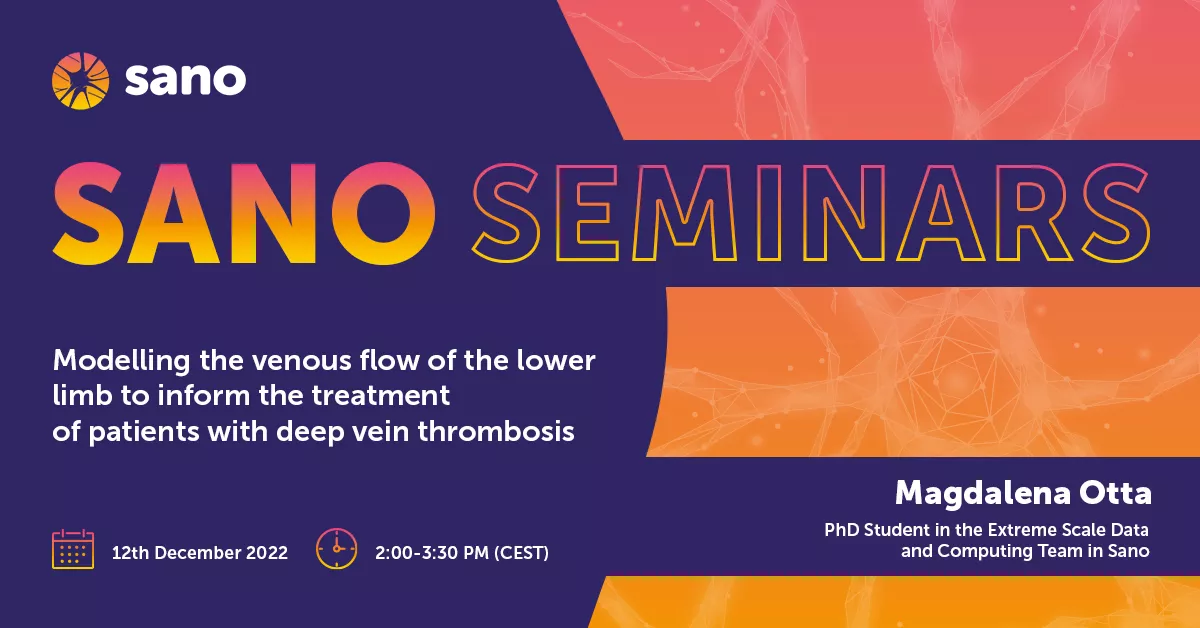
83. Modelling the venous flow of the lower limb to inform the treatment of patients with deep vein thrombosis
Magdalena Otta – Extreme-scale Data and Computing Team, Sano Centre for Computational Science, Krakow, PL
Abstract
Deep vein thrombosis (DVT) of the lower limb is a medical condition in which blood clots form in deep veins due to pathological changes in blood vessels. Between 20 and 50% of DVT patients will develop long-term complications known as post-thrombotic syndrome (PTS). Diagnosis of PTS is challenging because clinical presentation varies significantly between patients. Because thrombotic changes are either the cause or consequence of changes in blood flow patterns, modelling the flow has the potential to support the evidence-based clinical decision-making process in PTS treatment. The fluid dynamics of the cardiovascular system have been modelled extensively, especially on the arterial side, but there is an evident lack of studies describing the modelling of venous circulation.
In this talk, I will give you an overview of my current research in modelling venous flow in the context of PTS treatment. This includes a numerical approach to a 0D model (steady-state and transient) of global circulation constructed based on an electric-hydraulic analogy, with global sensitivity analysis conducted on the steady-state system. I will also briefly describe elements of steady-state CFD analysis in 3D – to investigate local flow properties.
This work is conducted in collaboration with clinicians from the Royal Free London NHS Foundation Trust Hospital.
About the author
Magdalena Otta holds a Master of Physics (Hons) degree obtained at the University of Edinburgh in 2021. The subject of her thesis was modelling a single-cell response to fractionated radiotherapy to induce the abscopal effect in cancer treatment. She joined Sano in September 2021 and is currently working in the modelling and simulation domain as a member of the Extreme Scale Data and Computing team. She switched her interest from cancer to cardiovascular disease and, since September 2021, has been pursuing a PhD degree from The Department of Infection, Immunity and Cardiovascular Disease at the University of Sheffield, UK. Her work focuses on modelling venous flow in patients presenting with deep vein thrombosis of the lower limb.

